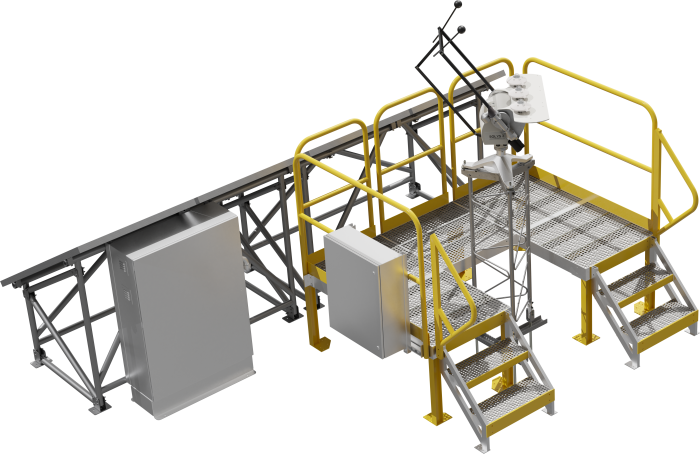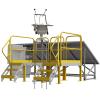This product is not available for new orders. We recommend ordering: SunSentry.
概览
The CSP100 is a turn-key automated data-acquisition system specifically designed to meet CAISO meteorological station requirements of concentrated-solar-power generating facilities. It is recommended for assessing power-plant performance, which requires the best possible solar resource measurements.
The CSP100 is field-ready, with features to minimize installation time and field wiring errors. Though offered as a turn-key package, nearly every aspect of the system is customizable, including sensors, communications, mounting, and power supply.
测量
Most of the systems we sell are customized. These systems, however, typically measure the following parameters:
- Direct Normal Irradiance (DNI)
- Diffuse Horizontal Irradiance (DHI)
- Global Horizontal Irradiance (GH)
- Wind speed
- Wind direction
- Air temperature
- Relative humidity
- Barometric pressure
- Precipitation
优势与特点
- 包含一个Campbell Scientific CR1000测量和控制数据采集器
- 提供最低不确定性的GH、DNI和DIFF太阳辐射测量
- 使用工业验证过的高精度传感器,快速地应用到野外站点
- 厂家装配、编程和测试,最小化野外接线错误,减小了安装时间
- 符合要求气象数据点的CAISO标准
- 经认证的加利福尼亚ISO远程智能网关(RIG),将加密数据安全传送到CAISO
- 依从Modbus、PakBus和DNP3等协议
- 支持近乎所有的通讯技术,例如RS-485、光纤、TCP/IP、蜂窝电话或卫星通讯
- 参数设计:“太阳能资源和气象学工程(SOLRMAP)”,NREL
- 提供模块化的,可编程的和可定制的系统
- 提供备份电池系统,可在电源断供期或网络故障时收集数据
- 用作环境的、逆变器和表读数据的单点数据网关
- 支持TCP/IP功能组,包括:HTTP获取、HTTP投送、FTP服务器和客户端、TelNet服务器、PING、微串行服务、DHCP客户端、DNS客户端、电子邮件发送与接收
- 支持Web服务API
- 支持单个的模块和字符串级别的功率测量
- 发运时带有快速安装指导和系统接线图
图像










常见问题解答
CSP100: 4
展开全部收起全部
-
Unlike the Solar1000, the CSP100 is intended as a system to measure direct normal irradiance (DNI). DNI is solar radiation that comes in a straight line from the direction of the sun at its current position in the sky. DNI is important for concentrated solar power, concentrated photovoltaic (CPV), and solar thermal systems.
The Solar1000 is intended to be used for traditional photovoltaic technology.
-
The CSP100 can be used for both resource assessment and power performance. If the system will be used for resource assessment, the following items are needed: a dc power supply, a solid foundation for the tracker stand, and, perhaps, a general meteorological sensor stand.
Note: The solar tracking component of the CSP100 requires a rather high power draw for remote use (>15 W when powered with Vdc, >21 W when powered with Vac, and potentially up to 100 W).
-
No. The main concern when installing the system is to ensure that the stand is secure to the ground and that the sensors are aligned and leveled. With patience, these tasks can be performed fairly easily.
-
While the trackers Campbell Scientific uses can vary in their maintenance needs, all the trackers are fairly maintenance free when compared with the solar sensors. The solar sensors should be cleaned daily—at the minimum, weekly. The required maintenance cycle varies based on location, precipitation, and biologic activity.